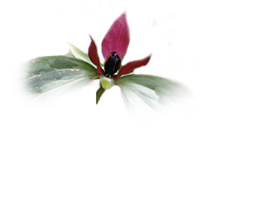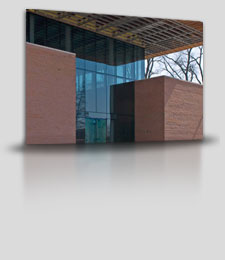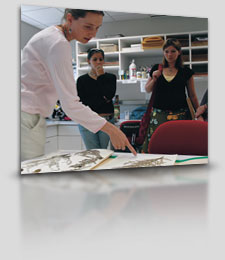



The Daniel F. and Ada L. Rice Plant Conservation Science Center
When it opens in September 2009, this 38,000-square-foot plant conservation science center will become mission control for the plant conservation community. You're invited.
Education
We’re training a new generation of plant conservation scientists and engaging the public to address the issues immediately. We're developing policies and programs to plan for the future. The Rice Science Center will house our Master’s Degree and new Ph.D. programs in Plant Biology and Conservation, offered in partnership with Northwestern University.
Research
The Garden has one of the largest and highest impact plant conservation science programs in the world. Our programs include:
Plant Conservation Garden scientists are making important discoveries about the most pressing threats to plant survival, including climate change, habitat loss and fragmentation, invasive species, over harvesting, and pollution. Their research improves our understanding of the biology of rare plants and the biological communities that they grow in so we can conserve them more successfully and efficiently.
» Learn more
Habitat Fragmentation The tallgrass prairie once stretched from Illinois through Kansas and from Canada to Texas. But agriculture and development have virtually erased the prairie from the map. Chicago Botanic Garden scientists are studying small prairie fragments (patches), hoping to conserve them. Using new knowledge about habitat fragmentation and fundamental biological processes, we can improve management of natural populations and restoration of degraded ecosystems.
» Learn more
Climate Change The Intergovernmental Panel on Climate Change estimates that if temperatures rise approximately two to four degrees Fahrenheit, one-third of species will be lost from their current range. By tracking when plants flower, Garden scientists can better predict how plants will respond to future climate changes. Scientists and volunteers also are storing seeds through seed banking programs.
» Learn more
Leadership
The Garden is an integral part of an international scientific community. We partner with organizations worldwide to address conservation issues, share research and influence policy.
- In the past year, Chicago Botanic Garden scientists trained and placed more than 100 interns with federal land management agencies, authored 22 research papers published in national and international journals, wrote 32 technical reports for state and national agencies, and made 80 presentations at national and international conferences.
- The Garden’s staff includes 31 full time scientists and technicians plus interns, graduate students, and research associates and collaborators–a team of nearly 200 people–about 50 of whom are currently housed in a 7,500-square-foot laboratory center. The rest are off-site, working in 20 states through our U.S. Bureau of Land Management partnership.
Citizen Scientists
When do plants bloom? That’s the idea behind Project Budburst, a citizen-supported effort to track and monitor the emergence of foliage and flowers, and track climate change. In its first year, the project had over 900 observations, and nearly two-thirds were submitted by children under age 12.
Learn More
Project Budburst
Seed Banking
Degree Programs
> NU Master’s
> NU Doctoral
> UIUC Bachelor’s
> UIUC Master’s
Botanic Garden Conservation International

